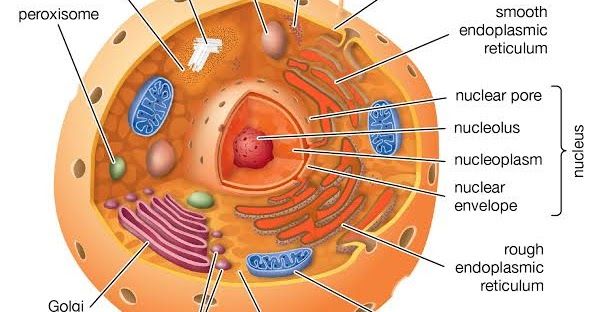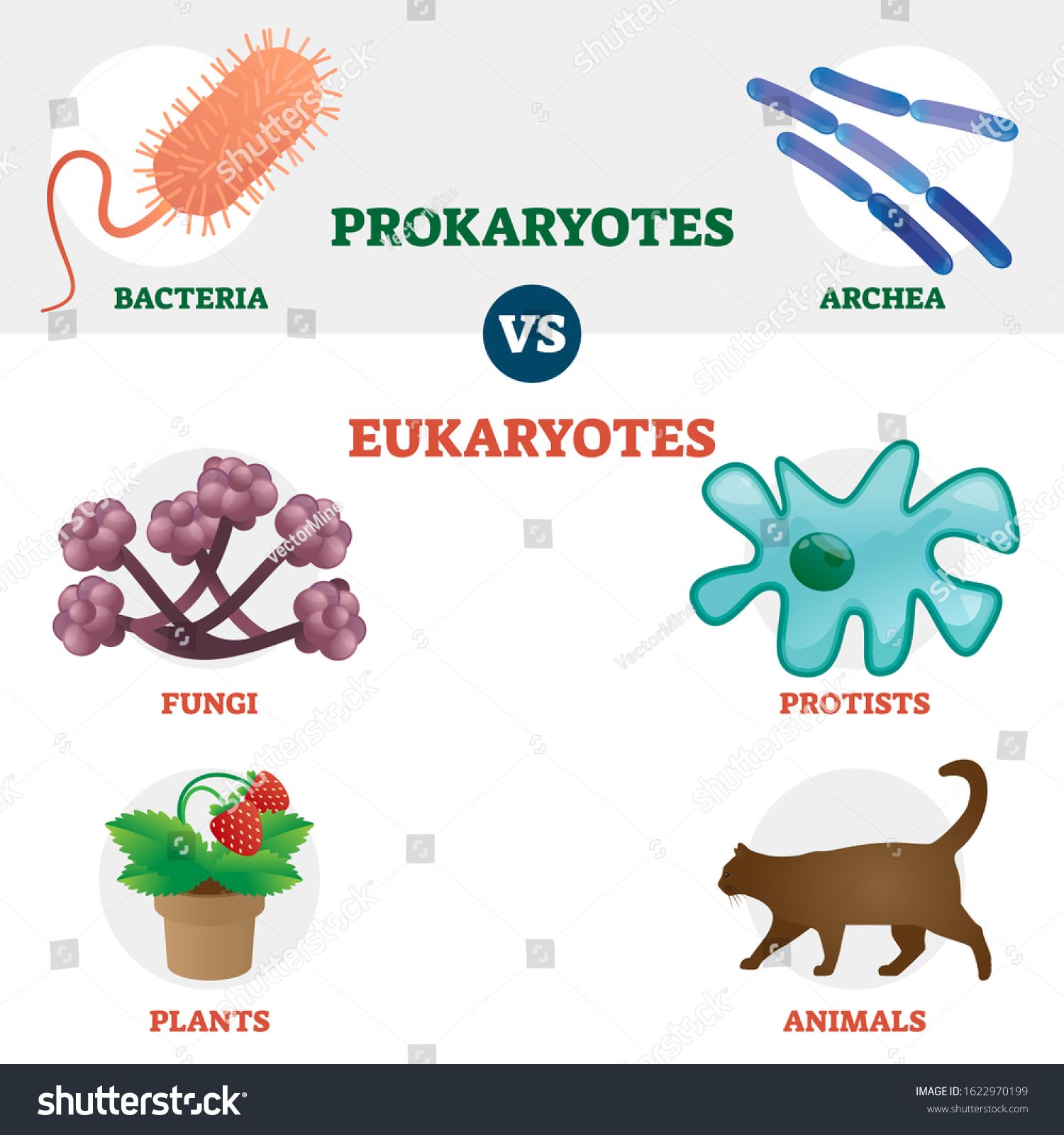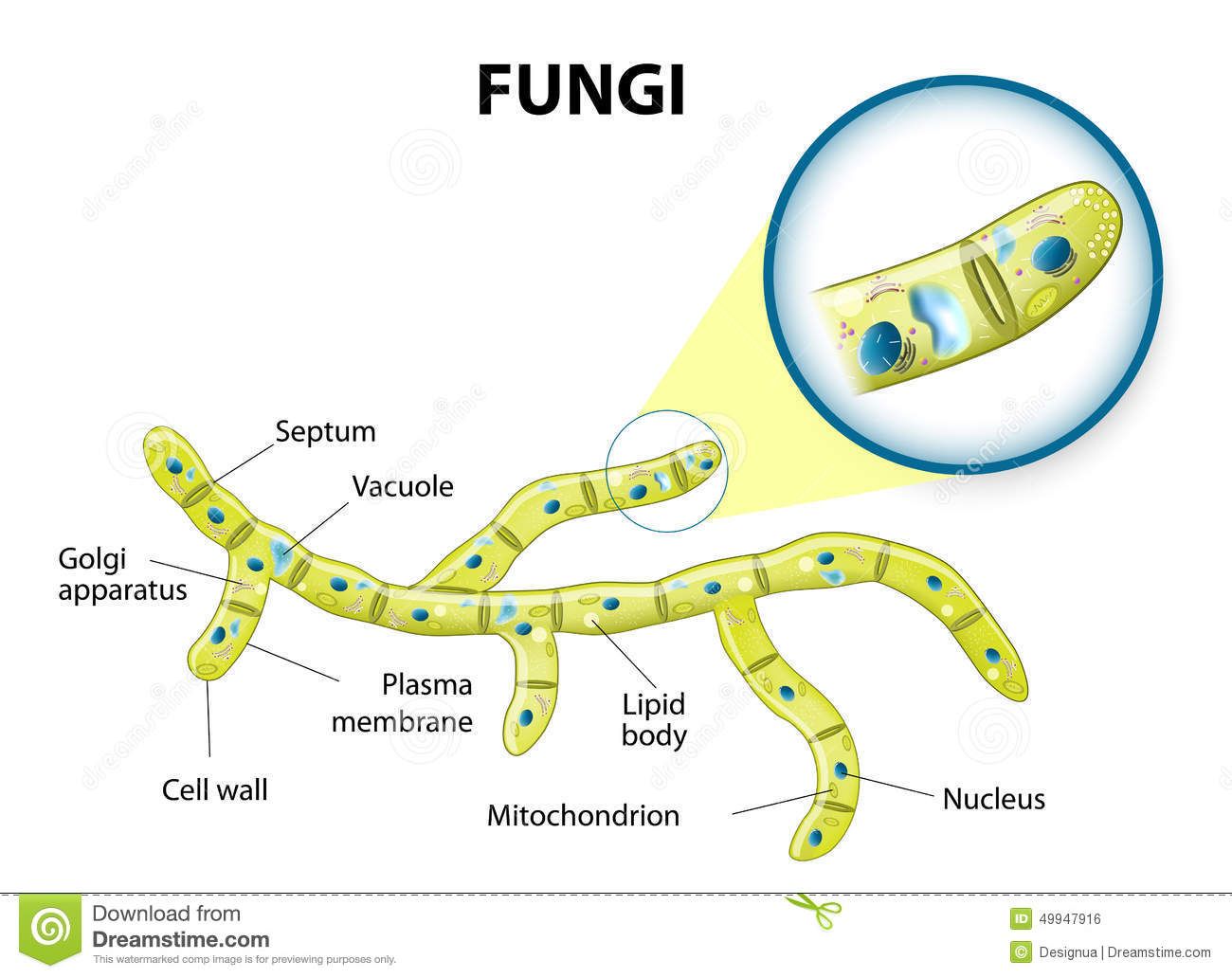Fungi are eukaryotic organisms that comprise one of the kingdoms of life. They all integrate together and perform the activities of the cell.

Eukaryotic Vs Prokaryotic Cells Educational Biology Vector Illustration Diagram Microbiology Scheme With Cell Prokaryotic Cell Cell Diagram Biology Diagrams
Fungi are eukaryotic organisms and possess a true membranous nucleus.

. Eukaryotic cells arose from prokaryotic cells and have a more complex organization than prokaryotic cells. It has a large vacuole which maintains the turgor pressure. Fungi live mostly as saprobiotic or often parasites. There are millions of species of fungi.
A few types of fungi have structures comparable to bacterial plasmids loops of DNA. As eukaryotes fungal cells contain a membrane-bound nucleus. The DNA in the nucleus is wrapped around histone proteins as is observed in other eukaryotic cells. Fungi are a group of spore-producing organisms feeding on organic matter including moulds yeasts mushrooms and toadstools.
Fungi are eukaryotic non-vascular non-motile and heterotrophic organisms. Reproductive types are important in distinguishing fungal groups. Answer 1 of 2. Pigments in fungi are associated with the cell wall.
What is fungus in human body. Fungi can be unicellular or multicellular. Eukaryotic fungi examples Fungi are typically a group of eukaryotic unicellular or multicellular spore developing heterotrophic organisms. Solution for Is fungi is eukaryotic and prokaryotic.
Most fungi are multicellular. The examples of eukaryotic cells are mentioned below. Animals plants fungi and protists are eukaryotes. They reproduce by means of spores.
The predominantly single-celled organisms of the domains Bacteria and Archaea are classified as prokaryotes pro before. They are a category of fungi that make their ATP from hydrogenosomes a structure name for the hydrogen it produces as waste. The cell wall is made up of cellulose which provides support to the plant. The simple answer is that the Fungi are Eukaryotes because their cells contain discrete membrane-bound organelles.
All multicellular organisms are eukaryotes. Fungi store their food in the form of starch. Ie their cells contain membrane-bound organelles and clearly defined nuclei. The Kingdom Fungi or Mycota is a group of living organisms that are multicellular eukaryotic and heterotrophic in nutrition.
Fungi is a Eukaryotic Organism. How YouTube Has Made Understanding Tech More Accessible. Fungi are eukaryotes and have a complex cellular organization. They live in the dirt on plants on household surfaces and on your skin.
Fungi or funguses is any member of the group of eukaryotic organisms that includes microorganisms such as yeasts and molds as well as the more familiar mushroomsThese organisms are classified as a kingdom separately from the other eukaryotic kingdoms which by one traditional classification include Plantae Animalia Protozoa and. Lets discuss about some eukaryotic. More than about 148000 fungi species are present throughout the world. Is fungi Eukaryotic.
They are Eukaryotes Multi-celled with Organelles. Fungi grow from the tips of filaments hyphae that make up the bodies of the organisms mycelia and they digest organic matter externally before absorbing it. A fungal infection also called mycosis is a skin disease caused by a fungus. F ungi have both diploid and haploid stages.
The fungi include diverse saprotrophic eukaryotic organisms with chitin cell walls. Both cells are the same but. As eukaryotic organisms fungi possess cells with organelles which are structures surrounded by membranes. Okay so lets translate that into English The only membranes present in Prokaryotic organisms are the cell membrane around the periphery of the organism which con.
Eukaryotic cells are exclusively found in plants animals fungi protozoa and other complex organisms. There are also many funguslike organisms including slime molds and oomycetes water molds that do not belong to kingdom Fungi but are often called fungi. Understanding a VPS for Beginners. Some like yeast and fungal spores are microscopic whereas some are large and conspicuous.
They may be unicellular or filamentous. It has a prominent nucleus and well-organized membrane-bound organelles such as mitochondria chloroplast Golgi apparatus endoplasmic reticulum etc. Fungi are eukaryotic organisms that comprise one of the kingdoms of life. Accordingly is fungi prokaryotic or eukaryotic cell.
Fungus plural fungi any of about 144000 known species of organisms of the kingdom Fungi which includes the yeasts rusts smuts mildews molds and mushrooms. Fungi are eukaryotes and have a complex cellular organization. Like plant cells fungal cells have a thick cell wall. Fungi exhibit the phenomenon of alternation of generation.
Most fungi are multicellular. No photosynthesis takes place in fungi. Animals plants fungi and protists are all eukaryoteseu means trueand are made up of eukaryotic cells. A few types of fungi have structures comparable to bacterial plasmids loops of DNA.
Fungi are eukaryotes and as such have a complex cellular organization. Fungal cells also contain mitochondria and a complex system of internal membranes. No embryonic stage in fungi is found. Fungi lack chlorophyll and hence cannot perform photosynthesis.
Fungi do not have vascular systems. As eukaryotes fungal cells contain a membrane-bound nucleus where the DNA is wrapped around histone proteins. As eukaryotes fungal cells contain a membrane-bound nucleus where the DNA is wrapped around histone proteins. As eukaryotic organisms fungi possess cells with organelles which are structures surrounded by membranesEukaryotic cells arose from prokaryotic cells and have a more complex organization than prokaryotic cellsMuch of the activity of prokaryotic cells takes place in the cytoplasm.
Fungi are eukaryotic organisms. Fungus are a kingdom of usually multicellular eukaryotic organisms that are heterotrophs cannot make their own food and have important roles in nutrient cycling in an ecosystemFungi reproduce both sexually and asexually and they also have symbiotic associations with plants and bacteriaHowever they are also responsible.

Procaryote And Eukaryote Comparision Prokaryotes Cells Worksheet Biology Worksheet

6 Differences Between Plant Cell And Fungal Cell Simple Point Wise Explanation Plant Cell Cell Wall Teaching Biology

Eukaryotes Comprise All Members Of Plantae Fungi And Animal Kingdomsincluding The Unicellular Fungus Yeast And Protozoans Euk Sel Hewan Membran Sel Buah Prem

Eukaryote Vs Prokaryote Cell Type Organisms Educational Set With Bacteria Archea Fungi Protists Pla Prokaryotes Prokaryotes Vs Eukaryotes Prokaryotic Cell

Fungi Cell Stock Vector Illustration Of Life Herbal 49947916 Cell Diagram Fungi Eukaryotic Cell